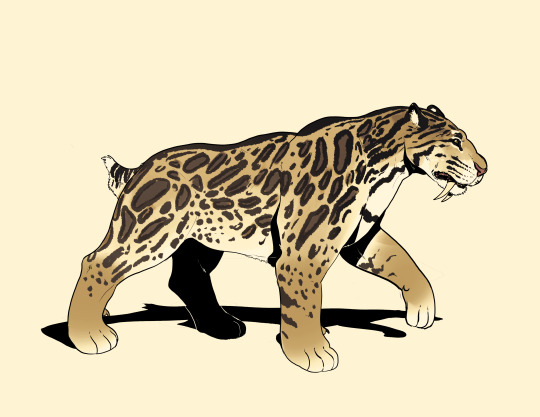#speculative paleoart
Text

a deinonychus mother dotingly checks on her first and only hatchling, after losing the rest of her clutch to opportunistic scavengers.
#might include her full design in the next roster#and maybe lil junior too#deinonychus#deinonychus antirrhopus#dromaeosaur#dromaeosaurs#dromaeosaurid#dromaeosaurids#dromaeosauridae#dinosaur#dinosaurs#theropod#theropods#theropod dinosaur#theropoda#feathered dinosaur#feathered dinosaurs#speculative paleoart#paleoart#paleontology#early cretaceous#my art
156 notes
·
View notes
Text

Speculative Velociraptor threat display i came up with
My speculation is that smaller dromaeosaurus like Deinonychus, Archeroraptor, etc had the feather raising ability to compensate for their lack of size and be able to intimidate enemies, whereas larger dromaeosaurs like Utahraptor, Dakotaraptor, Achillobator, etc didn't because they were already fairly large.
#dinosaurs#paleoart#paleontology#dinosaur art#velociraptor#archeroraptor#deinonychus#utahraptor#achillobator#dakotaraptor#dromaeosaur#raptor#art#digital art#speculative paleoart
299 notes
·
View notes
Text

Speculative common ancestor of all xenarthrans.
Small omnivore found in woodlands , it is nocturnal and rely mostly on sense of smell to find food or escape predators. It feeds on wide range of insects , roots , rotten plants and occasionally other tetrapods. Elongated claws on arms make it a decent burrower.

8 notes
·
View notes
Text
owl nanuqsaurus

SO SORRY FOR NOT POSTING LATELY! here is a simple owl nanuqsaurus to apologize. her name is jovanna. not giovanna. jovanna.
i didn't bother putting a ton of detail into the feathering, and i think i like it better that way.
17 notes
·
View notes
Text
So, what's going on with Kulindadromeus's tail?
If you know about the debate of how/when feathers originated in dinosaurs, you’ve likely heard of Kulindadromeus zabaikalicus, an early neornithischian dinosaur.

(Source: Wikipedia)
Now, the interesting thing about Kulindadromeus is the fact that it has feather-like filaments covering most of its body.

(Source: Wikipedia)
This is one of only a few ornithischian dinosaurs preserved with feather-like structures, and it does provide a lot in favor of feather-like structures being, at the very least, ancestral to Dinosauria, or even possibly Ornithodira.
There has been some doubt cast on whether the filaments of Kulindadromeus are actually homologous to feathers/protofeathers, or just a case of convergent evolution, but in my opinion, it makes the most sense for them to be homologous. The new research coming out with pterosaurs having colorful “fur”, and the increasing number of dinosaurs found with dino fuzz just leads me to feel it would be more surprising if evidence shows up that proves protofeathers aren’t ancestral to Ornithodira.
But my unprofessional opinion isn’t actually what I’m focusing on today. I’m actually focusing on something completely different, something everybody seems to have overlooked, despite it being glaringly obvious.
What in the world is going on with Kulindadromeus’s tail?
Its integument wasn’t actually covering its whole body. Unsurprisingly, it had scaly hands and feet, but in addition, it had a “hairless” tail covered in rectangular scales.

(Source: Wikipedia)
A fully scaly tail. On a very fuzzy animal.
For some reason, I haven’t seen anyone bring this up yet. Maybe somewhere in the depths of Reddit comments would you find a few asking about it, but there haven’t been any in depth discussions of why Kulindadromeus’s tail was bald, and what it was used for. I guess that means I’ll have to take a shot at it.
Be warned: this is simply the speculative ramblings of an amatuer paleoartist. None of this is scientific fact, and a lot of it might even be very easily proven wrong. But someone had to do this.
So, the first thing I noticed about this guy was that its tail looked pretty similar to a rat’s. And the more I looked into it, the more similar it seemed.
So rats have interesting tails. A rat tail actually has a few key roles. The first one is actually thermoregulation.
Rat tails have no fur, along with a large surface to volume ratio, meaning they can shed heat quite well through a system of blood vessels. This can help cool a rat down when it gets too hot.
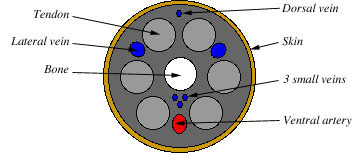
(Source: Rat Tails)
Rats also do this thing with their tails called degloving. When they are being attacked or feel threatened, they can shed the skin on their tails, leaving the skin behind, and having the remaining tail heal over. This has several problems, the first being that shedding their skin leaves the underlying tissue open to the elements, and, of course, harmful pathogens. It can be easy for the tail to get infected, causing even more problems.
…
No, I’m not gonna show you a picture. Go look it up if you want, but I wouldn’t recommend you to. Just imagine what it looks like when you pull a nail off, but ten times worse, and on a tail, and you’ve basically got the picture.
But somehow, despite the whole degloving thing being way more trouble than it’s worth, rats and their relatives continued on with this fun, painful defense mechanism. Great.
The third use is for keeping balance. There’s not much to say here, rats use their tails to stay stable on whatever they’re climbing on. I suppose you could say dinosaurs do something similar? It’s been hypothesized that they use their tails as rudders when running or jumping, especially with dromaeosaurs. And one of the big reasons they had such long, stiff tails was to help balance the weight of their front half, since they only had two legs. Actually, that could be why animals such as derived sauropods and ceratopsians had such reduced tails; they were well adapted quadrupeds, they didn’t need long, heavy tails anymore. (Ignoring birds and some maniraptorans, as they had shifted their center of mass somewhat, and the same rules didn’t quite apply to them.)

(Source: Rat Tails)
Now in terms of Kulindadromeus, there are a couple hypotheses I want to make.
The first is probably pretty simple, and a little less speculative: Kulindadromeus could have used its bare tail for thermoregulation, helping it stay cool. This isn’t too out there, as many modern, avian dinosaurs have bare patches of skin to aid in thermoregulation. Some non-avian dinosaurs have been hypothesized to have thermoregulatory structures, such as the stegosaurs(plates), sauropods(hollow skull, neck/spines), Spinosaurus(sail), and even theropods such as T. rex have been suggested to have lost their feathers as they evolved to be bigger in warmer environments, just like elephants did.
But this idea is gonna be weird, and probably wrong, but it’s really fun to think about.
Kulindadromeus could have shed its scales to escape predators, using the same degloving behavior rats use today.
There are a few problems I ran into with this idea. At first, I briefly toyed around with the idea of the animal losing the whole tail, like a lizard might. But the lizards that do this have very specialized anatomy to make sure their tails detach cleanly/can grow back, and even then the tails rarely grow back well. They’re wonky looking, and mostly exist only to distract any predators from their much more vital heads.
Of course, basically no non-avian dinosaur could realistically do this, especially not Kulindadromeus, as it was a fast biped that relied on its tail to keep itself stable. If it lost its tail, it wouldn’t just be an inconvenience, it would likely cripple its movement. That’s not even mentioning how I don’t know any archosaurs, living or extinct, that have adaptations for this. Maybe there’s some obscure Triassic creature I’m missing, but likely no dinosaurs could. So I had to move on to something different.
I thought up a couple different ways it could only lose its skin, not its whole tail. First there was the lizard-like shedding idea, where it would come off just like a snake skin, but this didn’t make much sense, as I’m pretty sure no scaly archosaur does this. Instead at the very least crocodilians shed their scales more like mammals shed skin: slowly, and over time, not in molts. Maybe it’s possible Kulindadromeus could’ve evolved something different, but I’m doubting it.
The most likely idea is the degloving method that rats use. This way, Kulindadromeus can still shed like a crocodilian/bird, but also have the scales on its tail rip off as a defense. It would be a realistic escape strategy, but wouldn’t just let the poor guy off the hook, it would cause significant pain, and wouldn’t be easy to deal with. But if it only lost a small amount of the tail, and it healed properly, it could go back to its happy Kulindadromeus life, doing whatever it is Kulindadromeus do.

(Source: Me! And some references featured in this post.)
There’s one remaining problem: I don’t know the biomechanics of archosaur scales. I know birds can shed their tail feathers, but pennaceous feathers are very separated from non-feather derived scales plus primitive feathers. Would the scales be too deeply set to lose? Even if they weren’t osteoderms(as they likely weren’t), did they still function differently from non-archosaur scales? How would this correlate to mammals losing skin? Skin is a very different integument to scales, and I don’t know if the process rats go through would translate very well to dinosaurs.
If anyone has any answers, feel free to let me know. If anyone has anything to add onto this, once again, feel free! I’d love to get some feedback, and maybe start building some more ideas.
Resources/credits:
Kulindadromeus - Wikipedia
Rat Tails
Rat - Wikipedia
Sauropod Dinosaurs Could Have Used Their Long Necks as Radiators
Degloving Injury – Rat Guide
Ratropolis: What to Do for a Degloved Tail
#kulindadromeus#feathered dinosaurs#dinosaurs#digital art#paleoart#dinosaur theory#theory#speculation#speculative paleoart#ornithischia#rats#rats are cute#pretty much unrelated but still true#sketch#sCiEnCe#maybe#procreate#dinosaur feathers#biology#cute birb thing#rat biology#my art
14 notes
·
View notes
Photo


Speculative depiction of sexual dimorphism in the Cretaceous dinosaur Citipati osmolskae.
#digital colouring#Palaeoart#citipati osmolskoe#oviraptorid#oviraptor#speculative paleoart#dinosaurs#cretaceous period#artists on tumblr
5 notes
·
View notes
Text
The Lancetfish is a species that looks like it comes straight out of a realistic fantasy world building project.
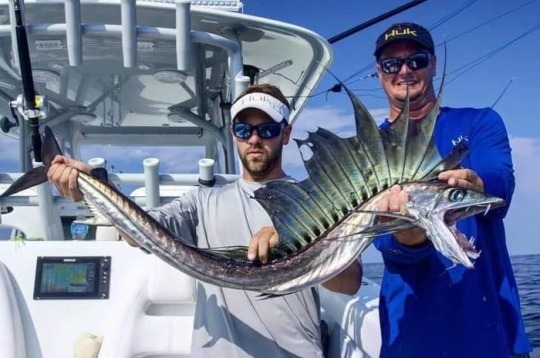
#speculative biology#speculative ecology#speculative evolution#speculative zoology#traditional art#traditional sketch#spectember#specposium#paleontology#fanart#paleo meme#paleo art#paleontologist#paleostream#paleobird#paleomedia#paleoblr#paleoillustration#paleoart#worldbuilding#world#fishing#world building#fantasy#realistic fantasy#fish#lancet fish#lancetfish
65K notes
·
View notes
Text
Complete - Devil’s Bat

Both twitter and tumblr crunches the quality… :<
The culmination of my silly anuro art! Which you all seemed to love so much. I hope you enjoy this as well! Now I am halfway done with my senior thesis, wowie!
Text in the photo:
I often heard screaming in the dead of night while camping in the dense German forests. One night, I decided to investigate. I discovered the culprit to be the tiny Devil’s Bat, a fitting name for sure. Who knew such a small creature could make such terrible noise?
The eyespots on the legs also gave me a fright… I thought I had locked gazes with some sort of demon!
2K notes
·
View notes
Text
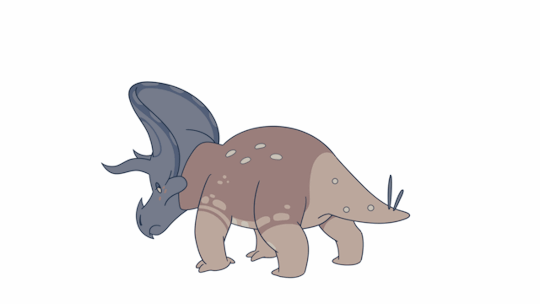
A silly little triceratops animation
#triceratops#dinosaur#paleoart#animation#ceratopsian#this is based on a triceratops design I made a few years back that has some newer speculative features#my art#WAAA I DIDNT REALIZS SO MANY PEOPLE WOULD LIKE THIS TYSM<333
3K notes
·
View notes
Text
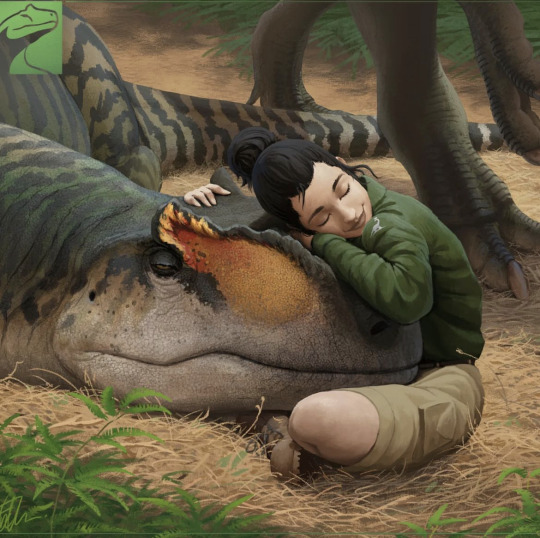
Frederic Wierum, fredward95 on instagram, Fred the Dinosaurman on youtube. May 18th 2023. Zookeeper with Allosaurus.
4K notes
·
View notes
Text

And so it finally happened, the next part of my redesign/refinement of Dragons Of The World is out.
Eurovenator is was an important influence for European dragon mythology and until late medieval times was still present in Europe itself.
because it is such an important species in research and culture I put a little bit more effort into explaining it's anatomy.
And yet, this is a very brief description, many topics I don't even touch on and the anatomy remains surface level.
Future entries will hopefully enlighten you more about the anatomical, behavioral and physiological oddities of this clade.

918 notes
·
View notes
Text
Clearly wrong and innaccurate Spinosauropod

#illustration#digital art#art#aesthetic#animals#dinosaur#paleoart#coprolite posting#paleo meme#humour#funny#speculative zoology#monster art#spinosaurus#spinofaarus#creature#creature design
410 notes
·
View notes
Text

a new acrylic painting of mine :) called "Sparrow"
#art#painting#paleoart#dinosaur art#acrylic painting#speculative biology#spec bio#so proud of this#learned a lot!!#my first time painting both grass#sky and a feathered creature#you CAN TELL W THE GRASS LOL
1K notes
·
View notes
Text

I had a thought that was basically "what if thyreosaurus isn't a stegosaur but huge pseudosuchian with heavy armor" and here we are
4 notes
·
View notes
Text

Most mosasaurs all had very similar body plans: they were streamlined scaly monitor-lizard-like marine reptiles with four rounded paddle-shaped flippers, and many of them also had large shark-like tail fins.
But Megapterygius wakayamaensis here seems to have been doing something a bit different.
Living towards the end of the Cretaceous, about 72 million years ago, in the waters covering what is now western Japan, this mosasaur was around the size of a modern orca, roughly 6m long (~20').
Unlike other known mosasaurs its flippers were huge, bigger than its own head and distinctively wing-shaped, with the back pair being larger than the front. This is an arrangement oddly reminiscent of the unrelated plesiosaurs, and may suggest a convergent sort of highly maneuverable "underwater flight" swimming ability – but unlike plesiosaurs Megapterygius also still had a powerful fluked tail, so how exactly all of its fins worked together is still unknown.
It's also the first mosasaur known to preserve potential evidence of a dorsal fin. Some of its back vertebrae show a change in orientation at the point where a fin base would be expected to be, closely resembling the vertebrae shape of cetaceans like the modern harbor porpoise.
—
NixIllustration.com | Tumblr | Patreon
#science illustration#paleontology#paleoart#palaeoblr#megapterygius#mosasauridae#mosasaur#squamata#lizard#lepidosauria#reptile#marine reptile#art#congrats to the artists who put speculative dorsal fins on their mosasaurs before this
594 notes
·
View notes
